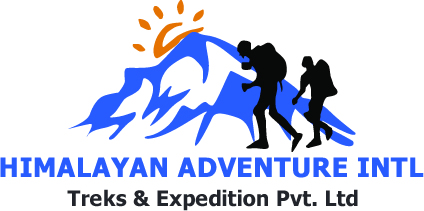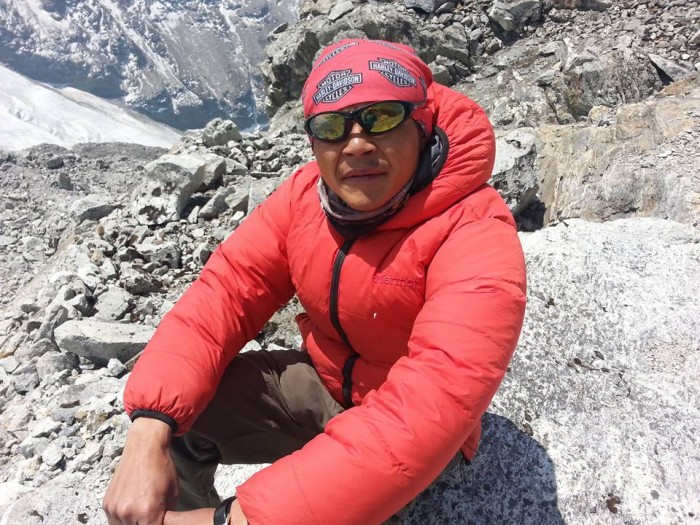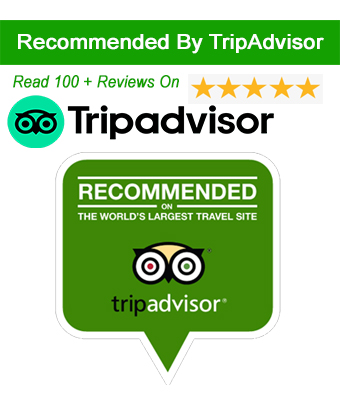Ramdung Go Peak, often simply called Ramdung Peak, is a hidden gem among Nepal's trekking and climbing destinations. Towering at 5,925 meters (19,436 ft), this majestic peak offers an ideal expedition for adventure seekers looking to experience technical yet rewarding Himalayan climbing. Nestled in the remote and culturally rich Rolwaling Valley, Ramdung Peak offers stunning views of Gauri Shankar, Melungtse, and even glimpses of Everest on a clear day.
Organized professionally by Himalayan Adventure International Treks, this climb is not just about reaching the summit—it's a complete Himalayan experience combining adventure, culture, and pristine nature.
Why Choose Ramdung Peak Climbing?
Ramdung Peak is a fantastic choice for novice climbers who are physically fit and looking for their first Himalayan summit. Unlike overcrowded peaks, Ramdung offers serenity and untouched natural beauty, along with exciting glacier traverses and a modest technical challenge. Its location in the Rolwaling Valley also opens the door to incredible trekking extensions, like the Rolwaling Tashi Lapcha Pass Trek, or additional summits like Yalung Ri Peak and Pachermo Peak.
Ramdung Peak Climbing from Base Camp
The actual ascent begins at the Ramdung Peak Base Camp, typically set up at around 5,000 meters near the Yalung Glacier. The approach to Base Camp is breathtaking, passing through traditional Sherpa villages, pristine forests, and remote pastures. The Na Gaun to Ramdung Peak Base Camp distance is approximately 12 kilometers (7.5 miles), taking about 6-7 hours on foot through rugged terrain and glacial moraines.
From Base Camp, climbers prepare for the summit push by acclimatizing and going over climbing techniques. The summit day involves traversing glaciers, negotiating crevasses, and climbing moderately steep snow slopes, especially near the summit ridge.
Ramdung Peak Climbing Itinerary
Below is a suggested Ramdung Peak climbing itinerary tailored by Himalayan Adventure International Treks. It allows ample time for acclimatization and exploration:
Day 1: Arrival in Kathmandu
Meet our team and enjoy a welcome dinner with a detailed briefing.
Day 2: Kathmandu Sightseeing & Preparation
Visit UNESCO sites and finalize climbing permits.
Day 3: Drive to Chet-Chet, then trek to Simigaun (2,000m)
Day 4: Trek to Kharka (2,900m)
Day 5: Trek to Beding (3,690m)
Day 6: Acclimatization Day at Beding
Day 7: Trek to Na Gaun (4,180m)
Day 8: Trek to Ramdung Base Camp (5,000m)
Day 9: Acclimatization & Glacier Practice
Day 10: Summit Day (5,925m) & Back to Base Camp
Day 11: Trek back to Na Gaun
Day 12: Trek to Beding
Day 13: Trek to Simigaun
Day 14: Trek to Chet-Chet and drive back to Kathmandu
Day 15: Departure
Optional extensions to Yalung Ri, Pachermo, or Tashi Lapcha Pass available.
Rolwaling Valley with Ramdung Peak Climbing
The Rolwaling Valley with Ramdung Peak climbing adds depth to the adventure. The valley is one of the most secluded and culturally rich trekking regions in Nepal. Known as the “Grave of the Yetis,” Rolwaling is steeped in mysticism and Sherpa heritage. You’ll pass through stunning rhododendron forests, highland pastures, and traditional Sherpa hamlets like Beding and Na Gaun, where centuries-old Buddhist practices are still alive.
Trekkers and climbers often report that the journey through Rolwaling Valley is as transformative as the summit itself.
How Much Does It Cost to Climb the Ramdung Peak?
The total cost to climb Ramdung Peak varies depending on the size of the group and services included. At Himalayan Adventure International Treks, we provide full-board packages to ensure a hassle-free experience. On average, the cost ranges from USD 2,500 to USD 3,500 per person, including permits, guides, accommodation, meals, transportation, climbing gear, and safety equipment.
Ramdung Peak Climbing Permit Cost
A climbing permit is mandatory to scale Ramdung. The Ramdung Peak climbing permit cost is set by the Nepal Mountaineering Association (NMA). The fees are as follows:
-
Spring (March-May): USD 250
-
Autumn (Sept-Nov): USD 125
-
Winter & Summer (Dec-Feb, Jun-Aug): USD 70
These costs are per person. Additional trekking permits (TIMS and Gaurishankar Conservation Area Permit) are also required and included in our package.
Rolwaling Tashi Lapcha Pass Trek Cost
Many climbers combine Ramdung with the challenging Rolwaling Tashi Lapcha Pass Trek, which links Rolwaling with the Khumbu (Everest) region. The Rolwaling Tashi Lapcha Pass Trek cost is generally around USD 1,800 to USD 2,200, depending on whether you include peak climbs like Pachermo and Ramdung.
This trek involves technical glacier travel, and we strongly recommend it for experienced trekkers or mountaineers.
Yalung Ri Peak Cost & Pachermo Peak Climbing Cost
For those aiming to climb multiple peaks in the Rolwaling region, adding Yalung Ri (5,630m) and Pachermo Peak (6,273m) makes for an incredible mountaineering journey.
-
Yalung Ri Peak cost: Starts at USD 1,500 per person, ideal for climbers training for higher peaks.
-
Pachermo Peak Climbing cost: Ranges from USD 2,500 to USD 2,800, as it requires technical skills and ropes for summit day.
Discounted packages are available for climbers choosing more than one summit with Himalayan Adventure International Treks.
Can Anyone Climb Ramdung Peak?
A common question we receive is: Can anyone climb Ramdung Peak?
The answer is yes, with the right preparation. Ramdung is classified as a trekking peak, which means it doesn’t require professional-level mountaineering experience. However, climbers should:
-
Be physically fit
-
Have basic knowledge of using crampons, ice axes, and ropes
-
Be prepared for cold temperatures and high altitudes
Our team provides full support, including pre-climb training at Base Camp. We’ve helped many first-time climbers successfully reach the summit!
Ramdung Peak Deaths: Is It Safe?
There have been very few recorded Ramdung Peak deaths, making it one of the safer Himalayan climbing peaks when approached with a guided expedition. The main challenges include altitude sickness, crevasse dangers, and weather changes. With proper acclimatization, expert guides, and medical preparedness (which our team ensures), the risks are significantly reduced.
At Himalayan Adventure International Treks, your safety is our priority. We carry satellite communication, oxygen, and a trained emergency response team for every expedition.
How Much Is the Permit for Ramdung Peak?
As mentioned earlier, the permit cost for Ramdung Peak ranges from USD 70 to USD 250, depending on the season. These are official NMA fees. Additional permits include:
All permits are arranged by our team, so you don’t need to worry about paperwork.
Best Time to Ramdung Peak Climbing
The best time to climb Ramdung Peak is during:
-
Spring (March to May): Clear skies, stable snow conditions, and blooming rhododendrons.
-
Autumn (September to November): Excellent visibility, moderate temperatures, and dry trails.
Winter climbs are possible but more challenging due to snow and cold. Summer (monsoon season) is not recommended due to slippery trails and poor visibility.
Is Ramdung Peak Worth It?
Absolutely. If you're wondering, is Ramdung Peak worth it?—here are just a few reasons why:
-
Breathtaking 360° Himalayan views
-
Fewer crowds compared to Everest or Annapurna
-
Immersive Sherpa culture in Rolwaling Valley
-
Multiple peak combinations for serious adventurers
-
Safe, guided climbs with professional teams
It’s the kind of adventure that stays with you for life. Whether it’s your first peak or part of a larger Himalayan journey, Ramdung delivers every step of the way.
Why Book with Himalayan Adventure International Treks?
We are a team of passionate professionals with deep roots in the mountains. Our founder, Binod Karki, and our expert Sherpa guides bring decades of experience to every expedition. Booking with us means:
-
Personalized itineraries
-
Certified, multilingual guides
-
Ethical and eco-conscious trekking practices
-
Competitive pricing with no hidden fees
-
High success rate and excellent safety record
From your arrival in Kathmandu to standing atop Ramdung Peak—and safely back—we take care of every detail.
Ramdung Go Peak Climbing is more than just a summit; it’s a spiritual and physical journey through one of Nepal’s most pristine valleys. With stunning views, exciting challenges, and rich cultural experiences, it's an adventure well worth the effort and investment.
So, if you’re ready to take the path less traveled, climb with confidence, and explore the Rolwaling Himalayas—Himalayan Adventure International Treks is here to guide you to the top of Ramdung Peak and beyond.
Contact us today to plan your Ramdung Peak Climbing adventure!
📧 Email: info@himalayanadventureintl.com
🌐 Website: www.himalayanadventureintl.com
📞 Call/WhatsApp: +977-9849674919

 Plan Your Trip Now
Plan Your Trip Now 


